The Poultry Project is among the most popular 4-H projects in Wisconsin. This is likely because of the wide variety of birds that members can explore, the relative ease of caring for birds, and the flexibility many towns and cities offer for residents to keep a limited number of backyard birds. Whether 4-Hers are interested in chickens, ducks, geese, or turkeys, there is a way to raise them, show them, and gain expertise about them through 4-H. During 2023, there were more than 3,726 members enrolled in Poultry or related projects.
There are an EGGSeptional number of topics to explore as part of the project. Some examples of these include breeds, body parts, feathers, eggs, animal nutrition, bird health and safety, business economics, and even industry-related careers. That said, few topics are more exciting and impressionable than chick embryology and the incubation and hatching process that makes it possible.
Hatching eggs in an incubator is a fun, hands-on way for 4-Hers of all ages to experience the miracle and fragility of new life while exploring science concepts such as temperature, humidity, food science, genetics, fertilization, life cycles, and physiology. From the moment they begin to set-up the incubator until the last chick leaves the brooder box for life in the coop, members will be growing their science abilities (observing, comparing, measuring, relating, and predicting) and building important life skills (planning and organizing, keeping records, problem solving, decision making, self-responsibility, compassion, empathy, and gratitude).
While there are many new-fangled kinds of equipment available to help increase your odds of incubation success, simple tried and true less expensive versions of the equipment provide the same hands-on experiences. If you are thinking about incubating eggs for project work, you may also want to reach out to your county 4-H staff to see if they have or know about equipment you can borrow. To carry out an embryology study, the basic equipment you will need includes an incubator, a reliable thermometer, a heat lamp, a feeder, a waterer, chick feed, and pine shaving bedding. An egg turner for your incubator is a nice add-on to consider, and a candler is essential if you want to observe the growing embryo during the process.
To get started, learn more about embryology and hatching through nationally offered 4-H curriculum available at https://shop4-h.org/. Three excellent resources are: Hatching Classroom Projects, Experiments in Poultry Science, and ChickQuest. These project guides provide info about equipment and procedures along with a variety of activities members can complete. The first two focus primarily on the chick development process. ChickQuest focuses more heavily on doing science with eggs.
Shop 4-H also offers a three-part project manual series and leader’s guide packed full of diverse and engaging Poultry Project activities. Learn more about this series and project learning topics on the Wisconsin 4-H Poultry Project web page.





